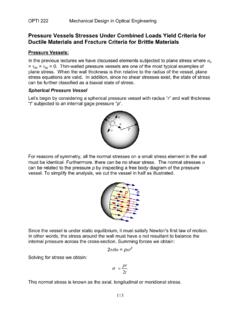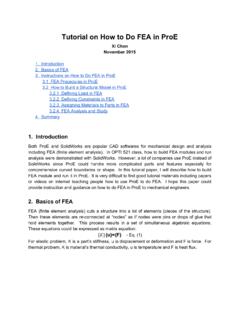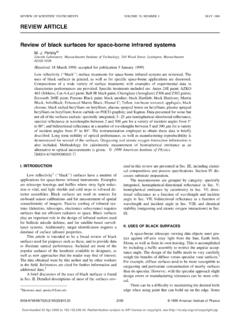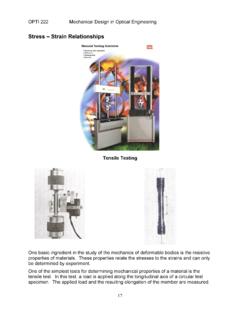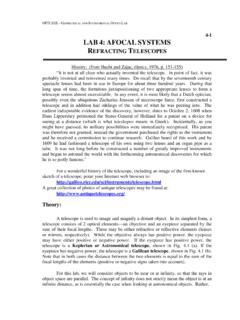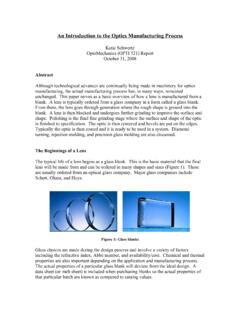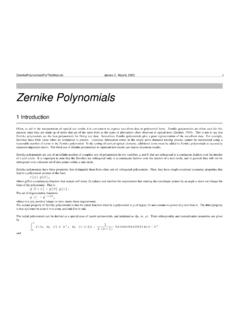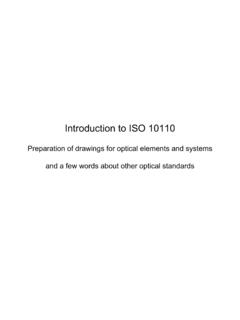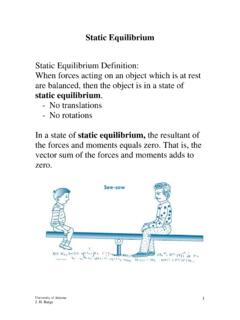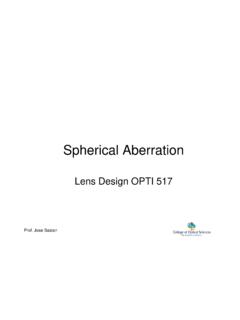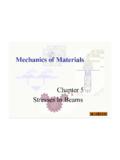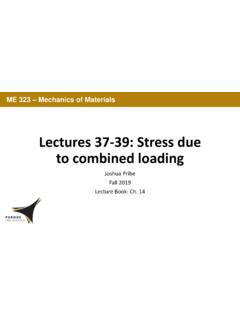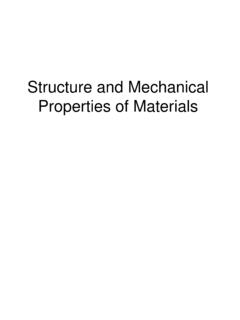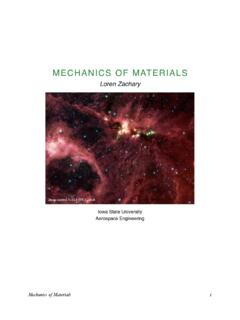Transcription of Shear Stresses in Beams - University of Arizona
1 OPTI 222 Mechanical Design in Optical Engineering 53 Shear Stresses in Beams Shear Stress in Beams : When a beam is subjected to nonuniform bending, both bending moments, M, and Shear forces, V, act on the cross section. The normal Stresses , x, associated with the bending moments are obtained from the flexure formula. We will now consider the distribution of Shear Stresses , , associated with the Shear force, V. Let us begin by examining a beam of rectangular cross section. We can reasonably assume that the Shear Stresses act parallel to the Shear force V. Let us also assume that the distribution of Shear Stresses is uniform across the width of the beam. Shear Stresses on one side of an element are accompanied by Shear Stresses of equal magnitude acting on perpendicular faces of an element.
2 Thus, there will be horizontal Shear Stresses between horizontal layers (fibers) of the beam, as well as, transverse Shear Stresses on the vertical cross section. At any point within the beam these complementary Shear Stresses are equal in magnitude. The existence of horizontal Shear Stresses in a beam can be demonstrated as follows. A single bar of depth 2h is much stiffer that two separate bars each of depth h. OPTI 222 Mechanical Design in Optical Engineering 54 Shown below is a rectangular beam in pure bending. Considering element pp1n1n and summing forces in the x direction along with several substitutions yields: VydAIb = Let Q = First moment of area = ydA VQIb = Where: V = transverse Shear force Q = first moment of area (section above area of interest) I = moment of inertia B = width of section For the rectangular section shown above: 22124 VhyI = As shown above, Shear Stresses vary quadratically with the distance y1 from the neutral axis.
3 The maximum Shear stress occurs at the neutral axis and is zero at both the top and bottom surface of the beam. For a rectangular cross section, the maximum Shear stress is obtained as follows: 224 8bh hbhQ == 312bhI= Substituting yields: max32VA = OPTI 222 Mechanical Design in Optical Engineering 55 For a circular cross section: max43VA = Built-Up Beams A built-up beam is fabricated from two or more pieces of material joined together to form a single solid beam. In such Beams it is desirable to determine the Shear flow, f, at critical locations. Derived in a similar manner: VQfI= Shear flow has the units of force per unit distance. The following are examples of the areas (shaded areas) used to determined Shear flow. OPTI 222 Mechanical Design in Optical Engineering 56 Example From a previous lecture we determined: Distance from top surface to centroid = inches Ixx = in4 Determine the maximum Shear stress, max and the Shear flow, f at the interface between the two blocks.
4
